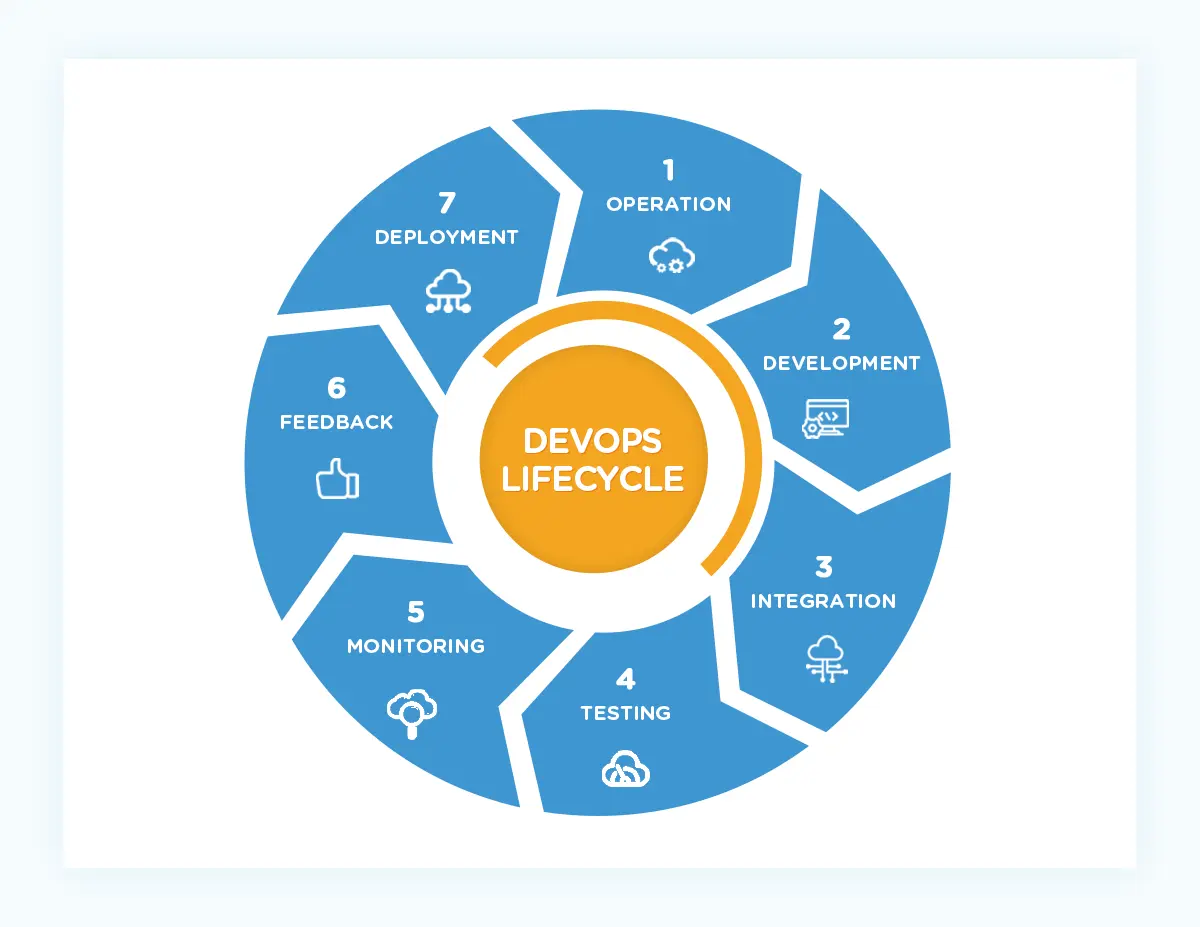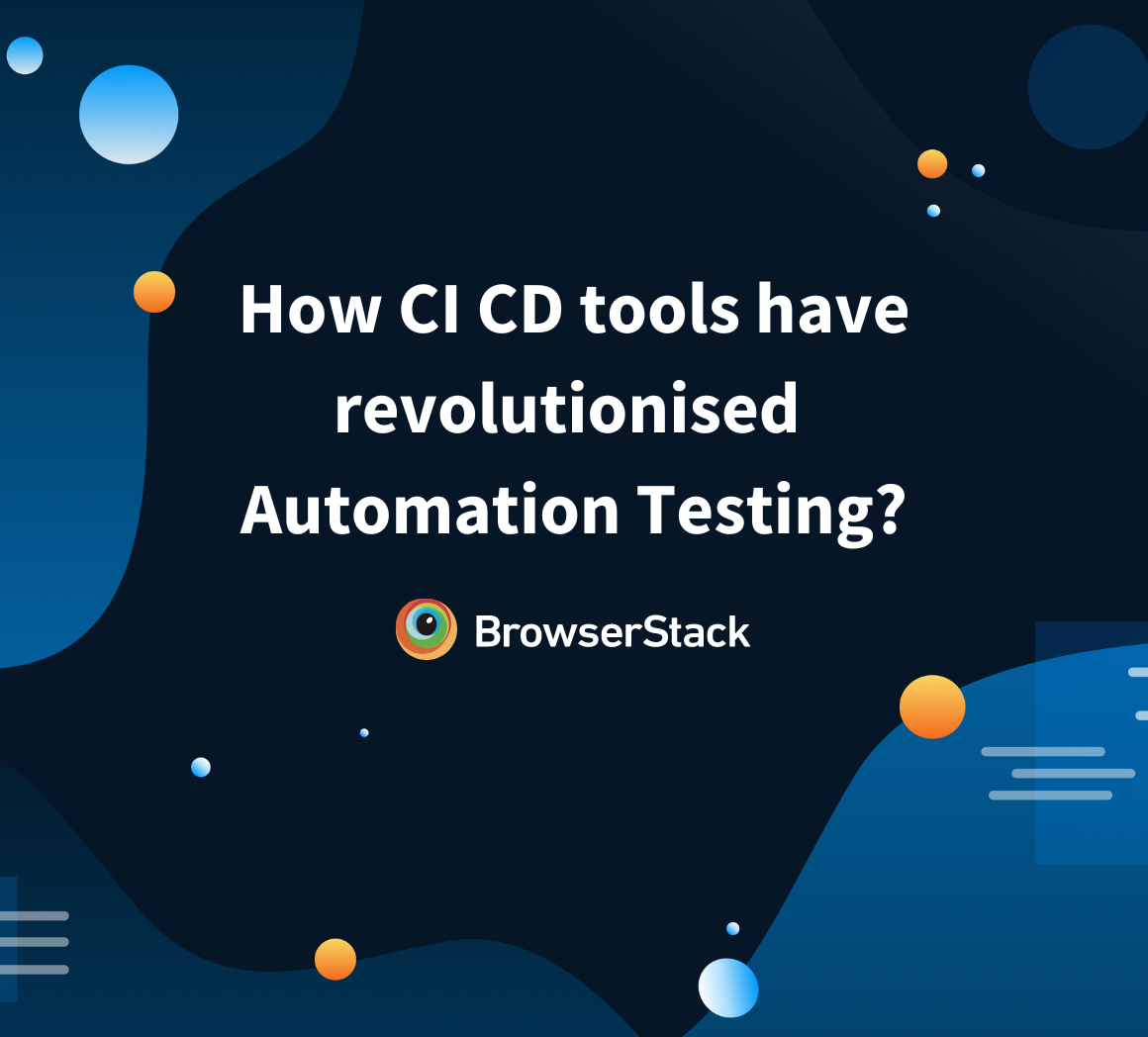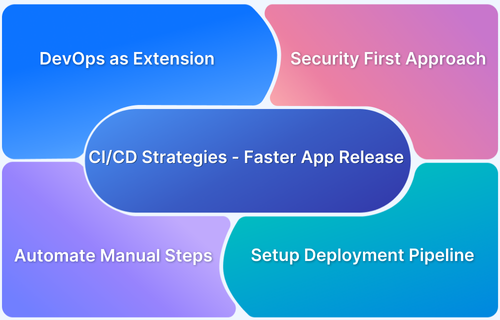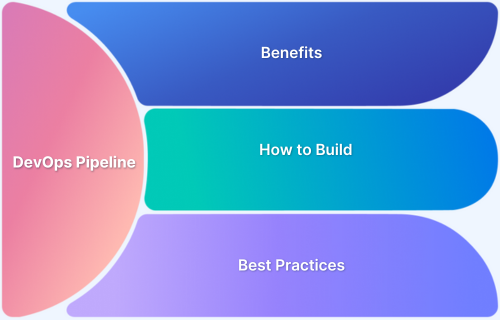By following the DevOps lifecycle, teams can continuously deliver value to users, improve collaboration between developers and operations, and enhance the overall efficiency of the software delivery process.
Overview
What is DevOps Lifecycle
The DevOps lifecycle is a continuous software development process that employs DevOps best practices to plan, build, integrate, deploy, monitor, operate, and offer continuous feedback throughout the software’s lifecycle.
Components of Devops Lifecycle
- Continuous Development
- Continuous Integration
- Continuous Testing
- Continuous Deployment
- Continuous Feedback
- Continuous Monitoring
- Continuous Operations
Benefits of DevOps Lifcycle
- Faster Time to Market
- Improved Collaboration and Communication
- Increased Efficiency through Automation
- Higher Quality Software
- Greater Flexibility and Scalability
- Improved Resource Management
- Improved Security and Compliance
This article explores DevOps lifecycle in detail covering its key components, tools, phases and more.
What is the DevOps Lifecycle
The DevOps lifecycle is a continuous software development process that employs DevOps best practices to plan, build, integrate, deploy, monitor, operate, and offer continuous feedback throughout the software’s lifecycle.
It is often represented by a continuous loop diagram as seen below –
What are the Different Phases of the DevOps lifecycle
This section will delve into the different phases of the DevOps lifecycle in some detail.
1. Plan – The planning phase is exactly what it sounds like: planning the project’s lifecycle. In contrast to conventional methods to the development lifecycle, this model assumes that each stage will be repeated as necessary.
In this manner, the DevOps workflow is planned with the likelihood of future iterations and likely prior versions in mind.This implies that we will likely have information from past iterations that will better inform the next iteration, and that the present iteration will likewise inform the next iteration.
This stage often involves all teams to ensure that no area of the planning is ignored or forgotten.
2. Code – The developers will write the code and prepare it for the next phase during the coding stage. Developers will write code in accordance with the specifications outlined in the planning phase and will ensure that the code is created with the project’s operations in mind.
3. Build – Code will be introduced to the project during the construction phase, and if necessary, the project will be rebuilt to accommodate the new code. This can be accomplished in a variety of ways, although GitHub or a comparable version control site is frequently used.
The developer will request the addition of the code, which will then be reviewed as necessary. The request will be approved if the code is ready to be uploaded, and the code will be added to the project. Even when adding new features and addressing bugs, this method is effective.
4. Test – Throughout the testing phase, teams will do any necessary testing to ensure the project performs as planned. Teams will also test for edge and corner case issues at this stage. An “edge case” is a bug or issue that only manifests during an extreme operating event, whereas a “corner case” occurs when many circumstances are met.
5. Release – The release phase occurs when the code has been verified as ready for deployment and a last check for production readiness has been performed. The project will subsequently enter the deployment phase if it satisfies all requirements and has been thoroughly inspected for bugs and other problems.
6. Deploy – In the deploy phase, the project is prepared for the production environment and is operating as planned in that environment. This would be the responsibility of the operations team; in DevOps, it is a shared responsibility. This shared duty pushes team members to collaborate to guarantee a successful deployment.
7. Operate – In the operating phase, teams test the project in a production environment, and end users utilise the product. This crucial stage is by no means the final step. Rather, it informs future development cycles and manages the configuration of the production environment and the implementation of any runtime requirements.
8. Monitor – During the monitoring phase, product usage, as well as any feedback, issues, or possibilities for improvement, are recognized and documented. This information is then conveyed to the subsequent iteration to aid in the development process. This phase is essential for planning the next iteration and streamlines the pipeline’s development process.
Key Components of DevOps Lifecycle
The different phases of the DevOps Lifecycle can be broken down into 7 C’s for more practical clarity.
1. Continuous Development – This step is crucial in defining the vision for the entire software development process. It focuses mostly on project planning and coding. At this phase, stakeholders and project needs are gathered and discussed. In addition, the product backlog is maintained based on customer feedback and is divided down into smaller releases and milestones to facilitate continuous software development.
Once the team reaches consensus on the business requirements, the development team begins coding to meet those objectives. It is an ongoing procedure in which developers are obliged to code whenever there are modifications to the project requirements or performance difficulties.
2. Continuous Integration – Continuous integration is the most important stage of the DevOps lifecycle. At this phase, updated code or new functionality and features are developed and incorporated into the existing code.
In addition, defects are spotted and recognized in the code at each level of unit testing during this phase, and the source code is updated accordingly. This stage transforms integration into a continuous process in which code is tested before each commit. In addition, the necessary tests are planned during this period.
Read More: Continuous Integration with Jenkins
3. Continuous Testing – Some teams conduct the continuous testing phase prior to integration, whereas others conduct it after integration. Using Docker containers, quality analysts regularly test the software for defects and issues during this phase. In the event of a bug or error, the code is returned to the integration phase for correction.
Moreover, automation testing minimises the time and effort required to get reliable findings. During this stage, teams use technologies like as Selenium (testing framework), BrowserStack (real device and cross-browser testing platform) etc . In addition, continuous testing improves the test assessment report and reduces the cost of delivering and maintaining test environments.
Also Read: How to run Selenium Tests in Docker
4. Continuous Deployment – This is the most important and active step of the DevOps lifecycle, during which the finished code is released to production servers. Continuous deployment involves configuration management to ensure the proper and smooth deployment of code on servers.
Throughout the production phase, development teams deliver code to servers and schedule upgrades for servers, maintaining consistent configurations.
In addition to facilitating deployment, containerization tools ensure consistency throughout the development, testing, production, and staging environments. This methodology enabled the constant release of new features in production.
5. Continuous Feedback – Constant feedback was implemented to assess and enhance the application’s source code. During this phase, client behaviour is routinely examined for each release in an effort to enhance future releases and deployments. Companies can collect feedback using either a structured or unstructured strategy.
Under the structural method, input is gathered using questionnaires and surveys. In contrast, feedback is received in an unstructured manner via social media platforms. This phase is critical for making continuous delivery possible in order to release a better version of the program.
6. Continuous Monitoring – During this phase, the functioning and features of the application are regularly monitored to detect system faults such as low memory or a non-reachable server. This procedure enables the IT staff to swiftly detect app performance issues and their underlying causes.
Whenever IT teams discover a serious issue, the application goes through the complete DevOps cycle again to determine a solution. During this phase, however, security vulnerabilities can be recognized and corrected automatically.
Read More: What is Continuous Monitoring in DevOps?
7. Continuous Operations – The final phase of the DevOps lifecycle is essential for minimising scheduled maintenance and other planned downtime. Typically, developers are forced to take the server offline in order to perform updates, which increases the downtime and could cost the organisation a large amount of money.
Eventually, continuous operation automates the app’s startup and subsequent upgrades. It eliminates downtime using container management platforms such as Kubernetes and Docker.
Read More: Continuous Testing Strategy in DevOps
Additional Phases for DevSecOps
DevSecOps is the integration of security into a pipeline of continuous integration, continuous delivery, and continuous deployment. By infusing DevOps values into software security, security verification becomes an integral, active component of the development process.
Similar to DevOps, DevSecOps is an organisational and technological paradigm that blends automated IT technologies with project management workflows. DevSecOps incorporates active security audits and security testing into agile development and DevOps workflows so that security is incorporated into the product, as opposed to being added after the fact.
For teams to deploy DevSecOps, they must:
- Incorporate security throughout the software development lifecycle to decrease software code vulnerabilities.
- Ensure that the whole DevOps team, including developers and operational teams, is liable for adhering to security best practices.
- Facilitate automatic security checks at each level of software delivery by integrating security controls, tools, and processes into the DevOps workflow.
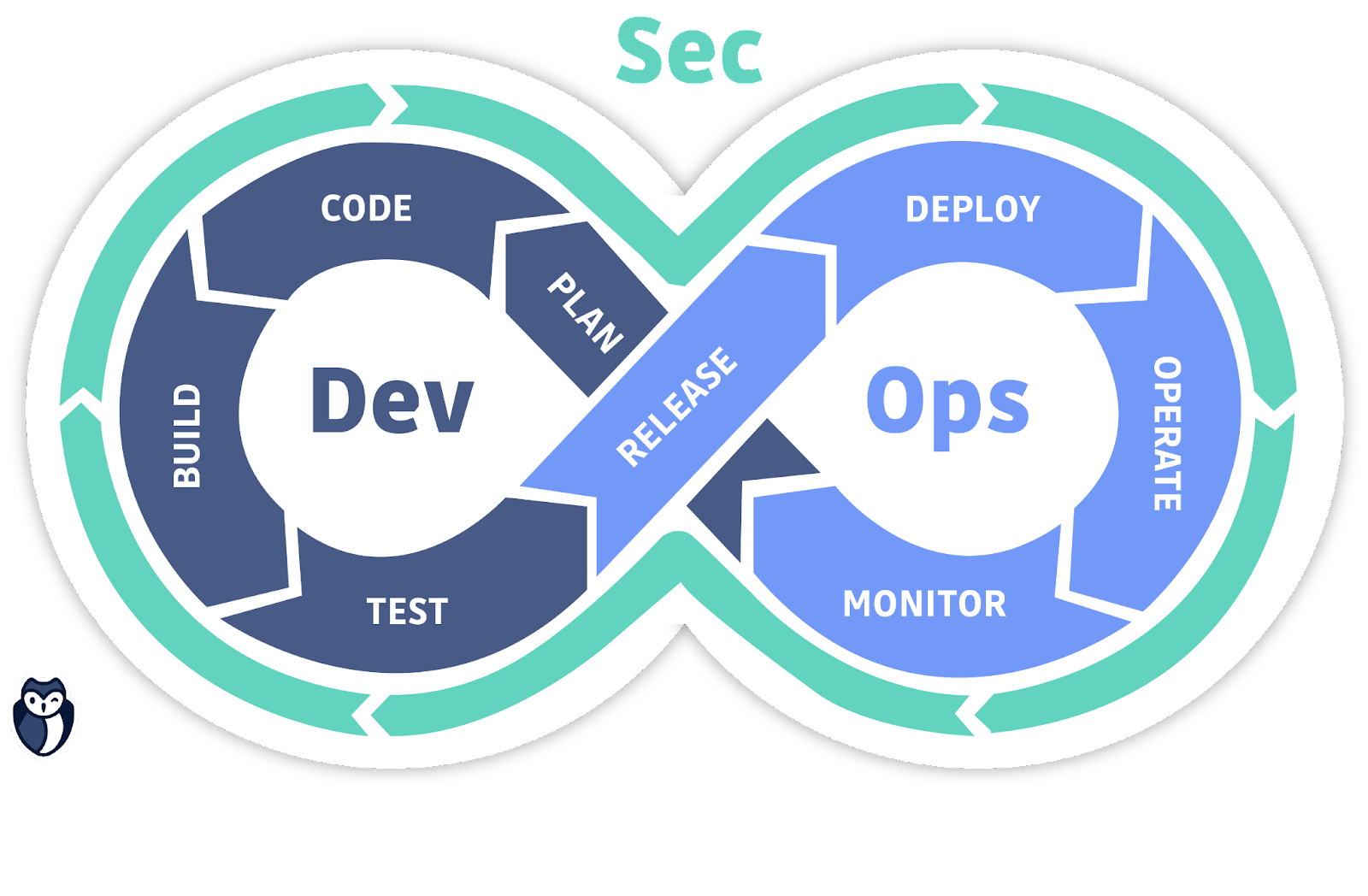
The following sections will elucidate how Security is applied to every phase of the DevOps Lifecycle:
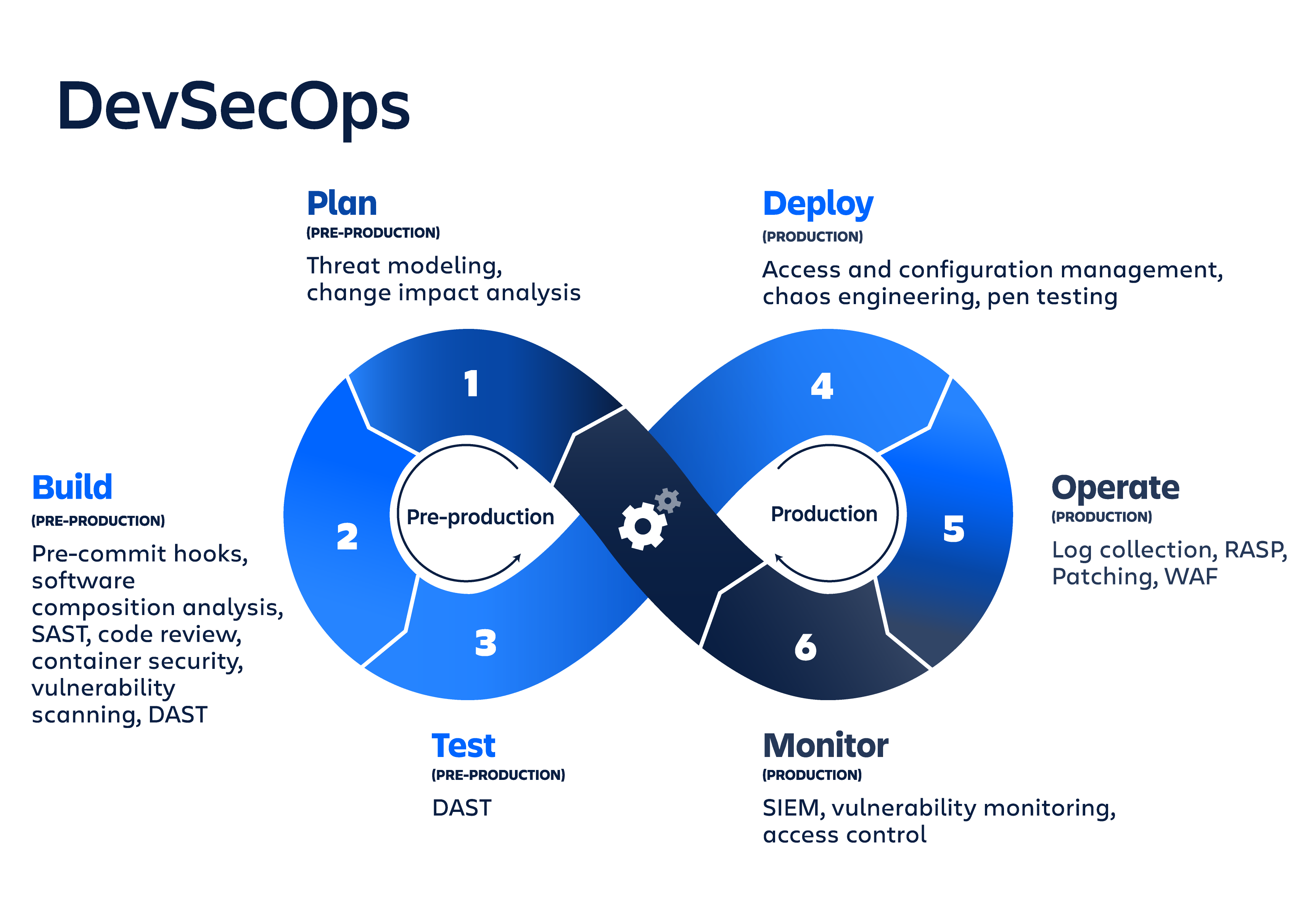
- Plan
The plan phase is the least automated part of DevSecOps, requiring security analysis collaboration, debate, review, and strategy.
Teams should conduct a security analysis and develop a plan outlining where, when, and how security testing will be conducted. IriusRisk, a collaborative design tool for threat modelling, is a prominent DevSecOps planning tool. Issue tracking and management systems such as Jira Software and communication and discussion technologies such as Slack are further tools.
- Build
As developers contribute code to the source repository, the build step begins. DevSecOps build technologies prioritise automating the security examination of build output artefacts. Software component analysis, static application software testing (SAST), and unit tests are essential security approaches. An existing CI/CD pipeline can be augmented with tools for automating these tests.
Installing and building upon third-party code dependencies, which may be from an unknown or untrusted source, is common practice for developers. External code dependencies may mistakenly or maliciously incorporate vulnerabilities and exploits. It is essential to review and scan these dependencies for security vulnerabilities during the build phase.
OWASP Dependency-Check, SonarQube, SourceClear, Retire.js, Checkmarx, and Snyk are examples of well-known analysis tools during the build step.
The code phase DevSecOps tools assist developers in writing better secure code. Key security procedures throughout the code-phase include static code analysis, code reviews, and pre-commit hooks.
When security technologies are directly integrated into the Git workflow of developers, every commit and merge will automatically trigger a security test or review. Several programming languages and integrated development environments are supported by these technologies. Gerrit, Phabricator, SpotBugs, PMD, CheckStyle, and Detect Security Bugs are a few of the most prominent security code tools.
- Test
After a build artefact has been successfully delivered to staging or testing environments, the test phase is launched. Running a complete test suite requires substantial time. This step should fail quickly so that the more costly testing tasks can be performed last.
The testing phase employs dynamic application security testing (DAST) instruments to detect real application processes such as user authentication, authorisation, SQL injection, and API-related endpoints. The security-focused DAST compares an application against a list of known critical vulnerabilities, such as the OWASP Top 10.
BDD Automated Security Tests, JBroFuzz, Boofuzz, OWASP ZAP, Arachi, IBM AppScan, GAUNTLT, and SecApp suite are only a few of the available open source and paid testing solutions that offer a variety of features and support for language ecosystems.
Must Read: Guide to DevOps Automation Testing
Pro Tip : DevOps and DevSecOps cannot be properly implemented without automated real device testing. Teams must make substantial use of automated tools for constructing, testing, reviewing, deploying, and monitoring code in order to maintain the deployment frequency attained by these techniques.
DevSecOps requires a collection of security testing tools (or tools that additionally cover security modules) in addition to the CI/CD technologies that are necessary for DevOps success.
BrowserStack integrates with various CI/CD tools to facilitate the implementation of DevOps. This includes Jira, Jenkins, TeamCity, Travis CI, and more technologies.
In addition, it provides a cloud Selenium grid of over 3000 genuine browsers and devices for testing. Moreover, built-in debugging tools allow testers to instantly detect and address errors.
- Deploy
If the preceding processes pass, it is time to deploy the build artifact to production. During the deployment phase, the security concerns to address are those that only occur against the live production system. For instance, all configuration variations between the production environment, the prior staging environment, and the development environment should be properly evaluated. The TLS and DRM certificates used in production should be checked and reviewed for impending renewal.
The deploy step is an ideal time for runtime verification tools such as Osquery, Falco, and Tripwire, which gather information from a running system to verify if it is performing as expected. Companies can also apply chaos engineering ideas by conducting experiments on a system to increase confidence in the system’s ability to endure chaotic situations. It is possible to replicate real-world occurrences such as server crashes, hard disk failures, and lost network connections. Netflix’s Chaos Monkey tool, which employs chaotic engineering ideas, is well-known. Moreover, Netflix has a Security Monkey application that searches for vulnerabilities or violations in badly configured infrastructure security groups and disables susceptible servers.
By the time the DevSecOps cycle reaches the release phase, the application code and executable should have been properly tested. The phase focuses on safeguarding the infrastructure of the runtime environment by reviewing configuration values for the environment, such as user access control, network firewall access, and secret data management.
- Observe
Further security precautions are required once an application has been deployed and stabilised in a production environment. Using automated security checks and security monitoring loops, businesses must monitor and observe the live application for any attacks or breaches.
Runtime application self-protection (RASP) discovers and stops inbound security threats automatically and in real-time. RASP functions as a reverse proxy that monitors incoming threats and enables the application to change itself automatically in response to defined conditions without requiring human participation.
A specialised internal or external team can conduct penetration testing to identify exploits or vulnerabilities by compromising a system on purpose. Offering a bug bounty program that compensates external individuals who reveal security exploits and flaws is another security measure.
Using analytics, security monitoring instruments and monitors crucial security-related variables. These tools, for instance, mark requests to sensitive public endpoints, such as user account access forms and database endpoints. Popular runtime defensive instruments include Imperva RASP, Alert Logic, and Halo.
Popular Tools for DevOps Lifecycle
Below is a breakdown of popular tools for each phase of the DevOps lifecycle:
1. Planning:
- Jira: A popular tool for issue tracking, project management, and agile project workflows.
- Trello: Visual collaboration tool for organizing tasks and projects.
- Asana: A tool for task management and team collaboration.
2. Development:
- GitHub: A web-based version control platform that helps developers store and share their code.
- GitLab: Another popular Git repository and version control platform.
- Bitbucket: A Git repository management solution for professional teams.
3. Continuous Integration (CI):
- Jenkins: A widely used CI tool for automating the build and testing phases.
- Travis CI: A CI tool for automating the software delivery pipeline.
- CircleCI: A continuous integration and delivery platform.
- GitHub Actions: Built-in CI/CD support in GitHub.
Read More: How to test GitHub Actions locally?
4. Continuous Testing :
- BrowserStack: Important for cross-browser testing. It allows teams to run tests on multiple browsers and devices simultaneously, ensuring compatibility across platforms during the testing phase.
- Selenium: An open-source tool for automating web browsers.
- Postman: Used for API testing and automation.
- Cucumber: A tool for behavior-driven development (BDD).
5. Continuous Delivery (CD):
- GitLab CI/CD: Built-in CI/CD features for automating delivery pipelines.
- Jenkins X: A CI/CD platform for Kubernetes and cloud-native applications.
6. Deployment:
- Kubernetes: An open-source platform for managing containerized applications across clusters of hosts.
- Docker: Platform for building, deploying, and managing containers.
- Ansible: Configuration management and deployment automation tool.
7. Continuous Monitoring:
- Prometheus: Open-source system monitoring and alerting toolkit.
- Grafana: Data visualization and monitoring tool, often used with Prometheus.
- Nagios: IT infrastructure monitoring tool.
8. Feedback and Optimization:
- Google Analytics: Used for gathering feedback on application usage.
- Hotjar: User behavior analytics, including heatmaps and session recordings.
- SonarQube: Continuous inspection tool for code quality.
9. Collaboration and Communication:
- Slack: Messaging platform for team communication and collaboration.
- Microsoft Teams: Team collaboration software for sharing files, meetings, and collaboration.
- Confluence: Documentation and knowledge sharing platform.
- Zoom: Video conferencing tool for remote meetings.
Best Practices for the DevOps lifecycle
Here are the best practices for DevOps lifecycle:
1. Have a customer centric mindset – Providing a solution for the customer from the outset will save time, effort, money, and resources that will prove important later on. Also, it promotes the “shift left” concept at the core of the DevOps process, enabling teams to evaluate crucial variables immediately.
2. Continuous Everything – This notion is essential for the iterative DevOps workflow; since the DevOps workflow is continuous, so should each step and stage within it. Continuous integration and deployment (CI/CD) is a prime example of this methodology, as are continuous testing, delivery, monitoring, etc.
3. Viewing the entire lifecycle holistically – While embarking on a new project, we frequently consider how we would like things to unfold. We will explore the facts and elements that may influence the course of events.
It would be extremely irresponsible to exclude this stage from the DevOps workflow, as it influences the entire project’s lifecycle. Addressing the end-to-end requirements of your project can save the team hours of labour and streamline its workflow.In addition, it aids in identifying jobs that can be automated, predicts demands, and avoids problems that might otherwise come from unanticipated variables.
Consideration of the full project lifecycle is in many ways identical to cross-team autonomy and accountability. It unites teams in their understanding of expectations and requirements and improves work delegation. Also, it develops a sense of ownership inside the firm, which leads to a feeling of pride in one’s work.
4. Encouraging Cross-Team Autonomy and Responsibility – Moreover, this cross-team autonomy and responsibility foster a culture that reduces the knowledge gap between team members and formerly compartmentalised jobs.
This narrowing of the gap results in fewer communication problems and increased productivity with delegated activities.
5. Automating as Much as Possible – Enterprises should automate as many process operations as possible inside a DevOps workflow without compromising the quality of the team’s work. Many of the activities within the phases of the DevOps pipeline do not require regular manual work; operations like testing may often be completed automatically.
Conclusion
DevOps has developed a new culture in the software development business by guaranteeing that software solutions adhere to the highest quality requirements. The primary goals of the DevOps lifecycle are continuity and optimization of automation. It’s all about how well the developers, testers, and operations teams work together to rapidly provide software with an enhanced user experience.
Enterprises should consider leveraging testing platforms like BrowserStack Automate, which easily integrate into developers’ CI/CD pipelines to enable agile teams to scale up, to get the most out of a CI/CD strategy.
BrowserStack integrates with various CI/CD tools to facilitate the implementation of DevOps. This includes Jira, Jenkins, TeamCity, Travis CI, and more technologies.
It also provides a cloud Selenium grid of 3500+ real browsers and devices for testing purposes. Moreover, built-in debugging tools allow testers to instantly detect and address errors.


